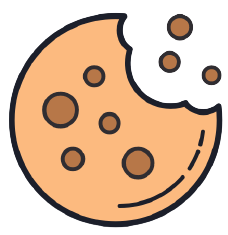Doctors say issues ranging from sleep disorders to anxiety and obesity are common as youngsters get hooked to caffeine-sugar fix.
Two years ago, two YouTubers and sports stars, Logan Paul and KSI, launched an energy drink called Prime Hydration. Even though it had not formally launched in India then, youngsters bought it at ridiculous prices in the black market, some forking out as much as Rs 1,500 a can. Now, one can get it for around Rs 250. The hype around Prime shows how the thirst for energy drinks is growing with adolescents and young adults looking for a quick energy fix: reaching out for one, then another and another; till they are trapped in a caffeinated vice grip.
While one energy drink is unlikely to do much harm, doctors warn against excess consumption. Most energy drinks have much more caffeine than regular soft drinks. For instance, a 250 ml bottle of regular cola has around 21 mg of caffeine while a 250 ml can of a popular energy drink has 80 mg. Prime has 140 mg in a 330 ml can. A classic Italian espresso would have 50 mg caffeine. Not that kids should trade energy drinks for espressos. For adolescents aged between 12 and 18, the American Academy of Pediatrics suggests capping daily caffeine intake at 100 mg while for children under 12, there’s no designated safe threshold.
BEHIND THE BUZZ:
Energy drinks temporarily boost energy through caffeine and sugar. “Caffeine blocks adenosine (a molecule that regulates heart rate, blood pressure, and sleep), receptors, enhancing alertness by increasing neurotransmitter activity. Sugar provides quick energy by rapidly increasing glucose levels. Together, they briefly improve focus and energy.
But excessive intake can cause an increased rate and a subsequent sugar crash. In teenagers, prolonged consumption can potentially disrupt endocrine function, leading to insulin resistance, and increasing the risk of type 2 diabetes, obesity, and hormonal imbalances. “Adolescents and people in their 20s can easily get addicted.”
NOT JUST A CAFFEINE PROBLEM:
Besides caffeine and sugar (or artificial sweeteners), energy drinks also contain an amino acid called taurine. Taurine may increase the risk of blood cancers. While taurine is naturally produced in the body and is also found in protein-rich foods, excessive intake through energy drinks and supplements could exacerbate leukemia.
Several countries are regulating consumption, with Lithuania being the first to ban sale to those under 18 in 2014. Latvia followed suit in 2016, and Poland banned sale of caffeine and taurine to minors in 2024. Sweden, Turkey, and Hungary have also banned sale to kids, while Denmark and Uruguay have a total ban in place..
But there’s widespread consumption globally. “Energy drinks are marketed to children and young people as a way to improve energy and performance, but evidence is clear they are harmful to their mental and physical health as well as behavior and education.”
THE TEEN WHO NEEDED DE-ADDICTION:
Those who already suffer from chronic health issues should avoid energy drinks altogether. But there’s the pressure to be part of the cool gang, especially with the hyper-masculine branding and packaging. “These drinks are expensive but when kids see their parents, friends and cousins drinking them, they have a natural urge to fit in. Over time, such drinks are not restricted to social occasions but become everyday drinks, urging adults to mind their own habits first.”
HOW MUCH IS TOO MUCH?:
Most healthy adults can consume up to 400 mg of caffeine a day, according to the FDA. Caffeine is not recommended for kids under 12, and those from 12 to 18 should consume no more than 100 mg per day.





